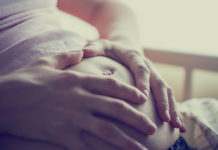
A woman is most fertile during ovulation—when her ovaries release a mature egg that travels through the fallopian tubes. The egg stays in the reproductive tract for about 12-24 hours, and if becomes fertilized with sperm during that time, a woman can become pregnant. Here are some tips for calculating your own ovulation cycle.
Ovulation and Fertility
After the egg is released, it survives for about 12-24 hours. However, sperm can live from three-five days in the reproductive tract, according to Staci Pollack, M.D., an OB-GYN for the Division of Reproductive Endocrinology & Infertility at Montefiore Health System. Therefore a woman can conceive by having unprotected sex five days before ovulation (though odds are highest on the day of ovulation and one day prior).
When is My Ovulation Date?
Most women ovulate about 14 days into their menstrual cycles (if you count the first day of your period as day one), according to Sharifa Menon, M.D., F.A.C.O.G, an OB-GYN at Westchester Medical Center, the flagship of the Westchester Medical Center Health Network (WMCHealth). For a very rough estimate, subtract 14 from the date you expect your next period to begin. Here are some ovulation date examples:
However, ovulation date depends on the length and regularity of your menstrual cycle—and it can be harder to tell when you're ovulating if your cycle varies from month to month.
Ovulation Date Calculator Methods
Besides tracking her cycle, a woman can also calculate ovulation date with other methods.
Ovulation Predictor Kits (OPKs): The most accurate way to know when you're ovulating is to use an ovulation predictor kit (OPK). These work by detecting a surge in luteinizing hormone (LH), which your body releases up to two days before you ovulate. Because these kits give you the most advance warning, they're your best bet for knowing when to time sex to coincide with ovulation.
Basal Body Temperature: Your basal body temperature (your body's temperature first thing in the morning) increases slightly—about half a degree —when ovulation occurs. Because this spike is so small, you need a special basal body thermometer to measure it.
Vaginal Discharge: Your vaginal discharge can help predict your ovulation date as well. Most women have a clear and somewhat elastic (try stretching it between two fingers) discharge in the days leading up to ovulation.
Ovulation Symptoms: Some physical symptoms may accompany ovulation, but they're subtle enough that not everyone can spot them. About 20 percent of women experience lower abdominal pain (it's called mittelschmerz) when ovulation occurs. Breast tenderness is also common.
Doctor Visit: With blood tests and pelvic ultrasounds, doctors are able to monitor your ovulation cycle, says Jingwen Hou, M.D., Ph.D., an Ob-Gyn specializing in reproductive endocrinology and infertility at Kaiser Permanente in Hawaii.





